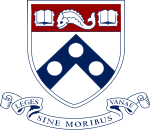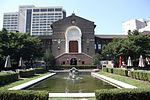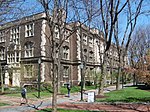Franklin Field

Franklin Field is an American sports stadium located in Philadelphia at the eastern edge of the University of Pennsylvania's campus. It is the home stadium for the Penn Relays, and is the University of Pennsylvania's stadium for football, track and field, lacrosse and formerly for soccer, field hockey and baseball. It is also used by Penn students for recreation, and for intramural and club sports, including touch football and cricket, and is the site of Penn's graduation exercises, weather permitting. According to the NCAA, Franklin Field is the oldest stadium still operating for football (although substantially renovated). It was the first college stadium in the United States with a scoreboard or an upper deck of seats. In 1922, it was the site of the first radio broadcast of a football game in 1922 on WIP, as well as of the first television broadcast of a football game by Philco.From 1958 until 1970, the stadium was the home field of the Philadelphia Eagles of the National Football League.
Excerpt from the Wikipedia article Franklin Field (License: CC BY-SA 3.0, Authors, Images).Franklin Field
South Street, Philadelphia
Geographical coordinates (GPS) Address External links Nearby Places Show on map
Geographical coordinates (GPS)
| Latitude | Longitude |
|---|---|
| N 39.95 ° | E -75.19 ° |
Address
Franklin Field
South Street
19104 Philadelphia
Pennsylvania, United States
Open on Google Maps







